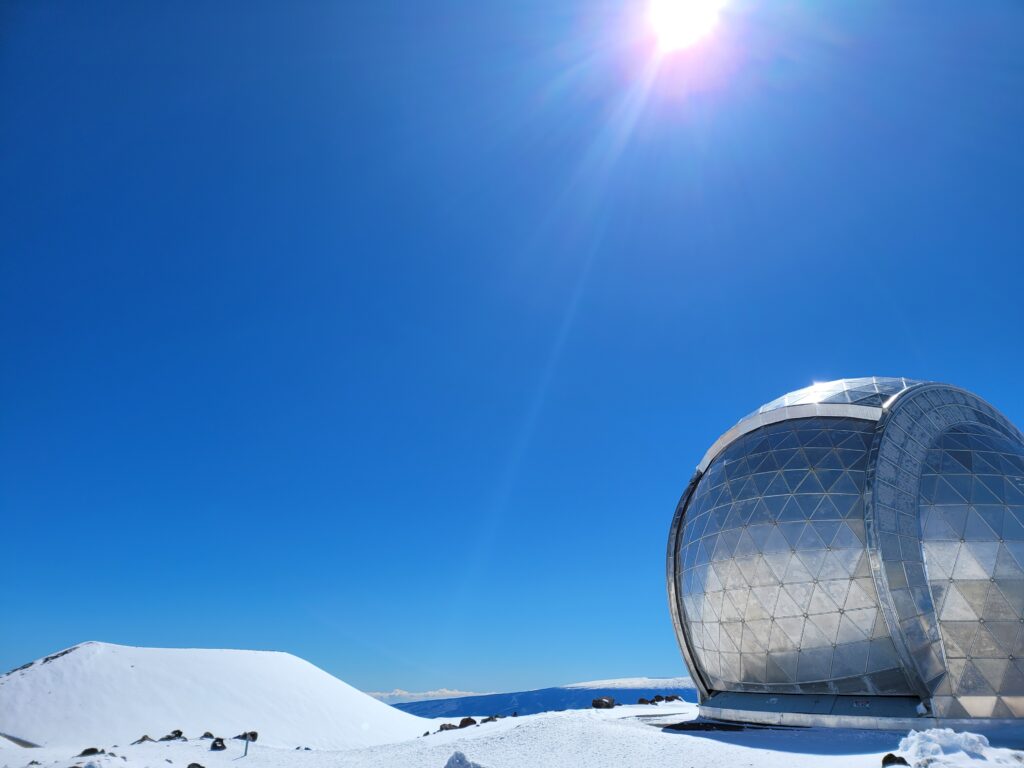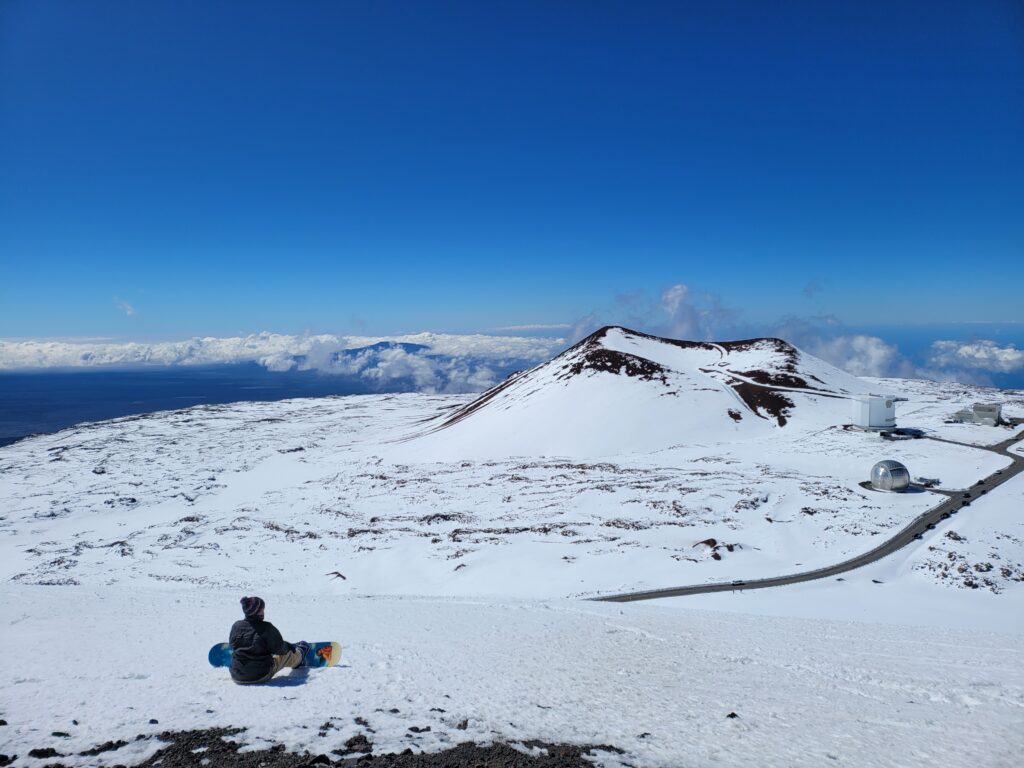
Not to be outdone by the incredible atmospheric river event that dumped more than 7 feet of snow in the Sierra Nevada earlier this week or the potential of blizzard-like conditions in the Mid Atlantic beginning this weekend, Hawaii got in on the wintertime weather action with its own snowstorm this week.
While most people don’t associate the tropical paradise Hawaii is known for with snow, they’re surprised to learn that it does snow in the winter due to the elevation of these volcanic peaks. Mauna Kea is the highest of the bunch at 13,803 feet. Maui’s Haleakala is much lower at 10,023 feet. Because of that difference, Hawaii Island will see snow more frequently than the lower Maui Island. Just one storm last January dropped 2-3 feet of snow on Hawaii Island and created snow drifts that were far deeper.
On Sunday, the National Weather Service in Honolulu on the island of Oahu, which is responsible for issuing forecasts and advisories for the entire Aloha State, issued a Winter Storm Watch for Hawaii Island’s Mauna Kea and Mauna Loa, the two highest volcanoes on the Big Island. Eventually, winter storm warning conditions appeared by Monday night, dumping more than a foot of snow some locals refer to as “pineapple powder.” Strong, gusty winds of more than 30 mph also whipped up the snow, creating white-out conditions in the areas being impacted by the heavy snow.
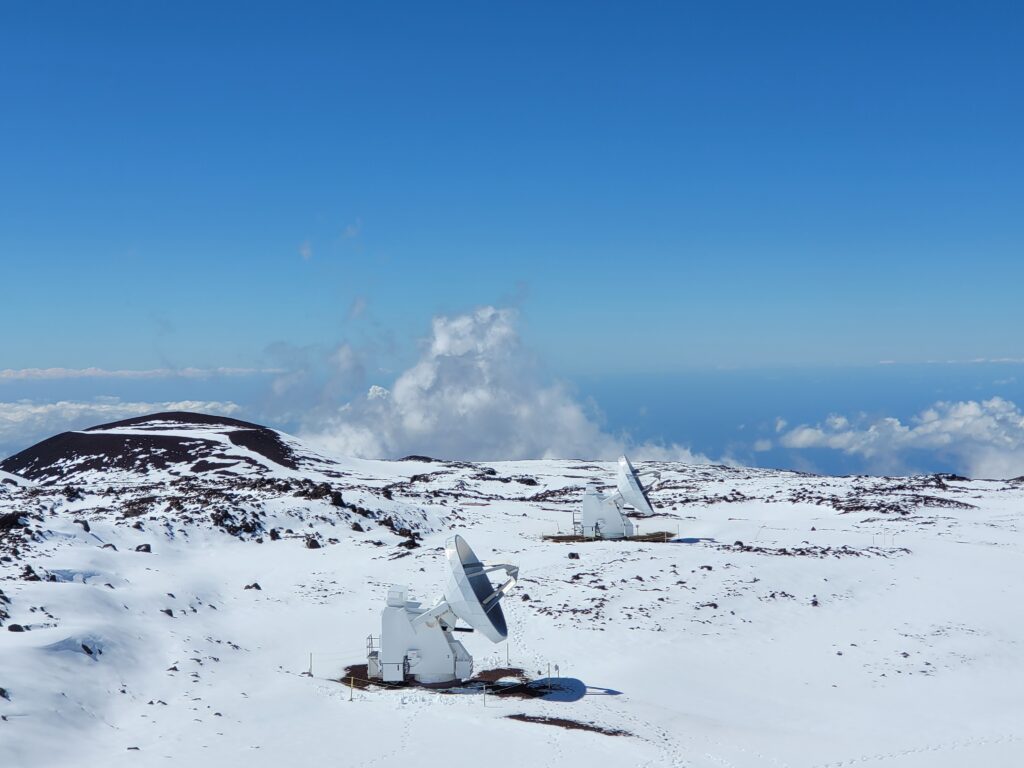
While heavy snow fell on the freezing cold higher elevations of Hawaii, soaking rains flooded portions of Hawaii, especially the eastern side of the island where bands of heavy rain marched through off the tropical Pacific. Glenwood recorded 7.82″ within 24 hours while Mountain View saw 7.33″; 7″ fell in Kapapala Ranch while 6.99″ of rain was recorded at the USGS gauge at Saddle Quarry.
While crews cleared roads of flood related debris on Tuesday, a snow removal crew got busy on Mauna Kea. While the site is visited by tourists, Hawaiian cultural practitioners, and of course, winter sports enthusiasts in the winter, the area just below the summit of Mauna Kea is home to some of the most powerful and advanced telescopes on Earth. To make sure technicians and related astronomers have access to the facilities on the mountain, crews work diligently to plow and blow the snow off the roads.
The Hawaiian landscape, dotted with telescopes of different types and sizes, saw a fresh 1-2 feet of snow this week. With the access road now plowed out, winter sports fans had a full day to play in what locals refer to as “pineapple powder.” #HIwx pic.twitter.com/AAVirCfcIw
— the Weatherboy (@theWeatherboy) January 29, 2021
By Wednesday morning, most of the roads to and around the summit were clear of snow, giving members of the astronomy community the chance to drive up nearly 14,000 feet to work in the sky. However, freezing fog and light snow shower activity returned later in the day, forcing rangers that patrol the mountain to close down the access road to visitors once again.
On Thursday, with clear blue skies over Hawaii’s Big Island and clear, dry roads available to the summit, the mountain was once again open to visitors.
View this post on Instagram
While many visitors simply looked around in awe of the wintry beauty and were busy taking pictures and shooting video, sports enthusiasts of different skill sets took to the slopes to enjoy the snow.
Near a small plowed-out parking area close to the summit, families brought their children to sled around a 20′ gentle slope. Beginner skiers and snowboarders also used this “bunny hill” to get acclimated to sliding around in the snow –and the altitude. At altitudes greater than 9,000 feet, altitude sickness could become problematic to even the most physically fit people.
About two dozen snowboarders and a few skiers took to the slopes, gliding down the snow-covered volcanic terrain around the telescopes at Mauna Kea’s peak on Thursday afternoon. Captain Cook, Hawaii’s Tai Johnson tells us he’ll try to come to the peak and snowboard for the 1 or 2 big winter snowstorms that hit the area. Also an avid surfer of the Kona side surf spots, Johnson says it’s also possible to surf and snowboard in the same day. “It’s a lot to go from the beach …all the way to almost 14,000 feet, which will do a number on you.” He adds, “But you can totally go surfing and come back here when it’s slushier in the evening”.
There is no infrastructure to support winter sports: no restrooms, no lodge, no equipment rentals, and no lifts. Locals take pick-up trucks to the summit and give each other rides back up the snowboardable slopes.
“We call it the ‘local lift’; it’s a free lift; it’s hitch-hiking with your thumb,” Johnson said. “And it’s friendly enough where everyone will give you a ride.” He already enjoyed 20 rides down and up the mountain and says he can go down and up upwards of 50 times a day as long as his “knees hold up.”
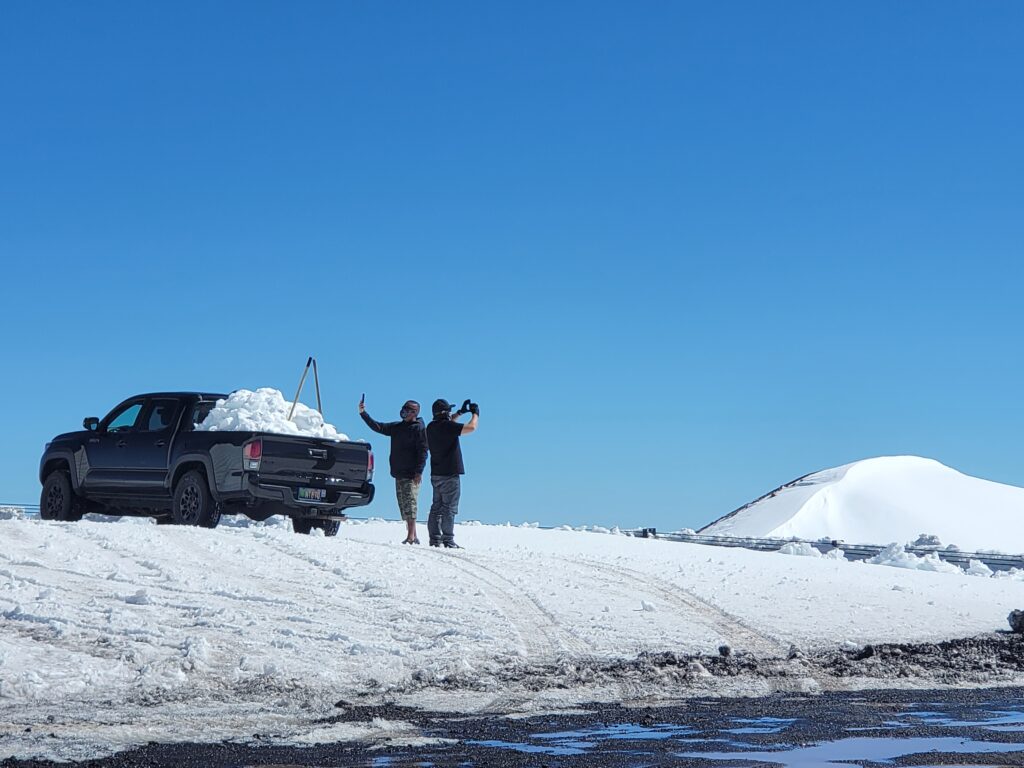
Beyond shuttling snowboarders and skiers around the summit slopes, the pick-up trucks also come in handy to haul snow to lower elevations. Because of the high altitude, not everyone can handle the thin air where the snow falls. And with typical Hawaiian outfits consisting of slippers and shorts, many don’t have any winter attire appropriate for the summit where temperatures may only top out in the 20’s on snow-covered days. Because of this, many will load up their trucks with snow and haul it down to waiting friends and family in warmer locations on the island. While the temperatures was near 30 during our visit at the summit, temperatures were in the low 80’s on Hawaii’s sunny beaches.
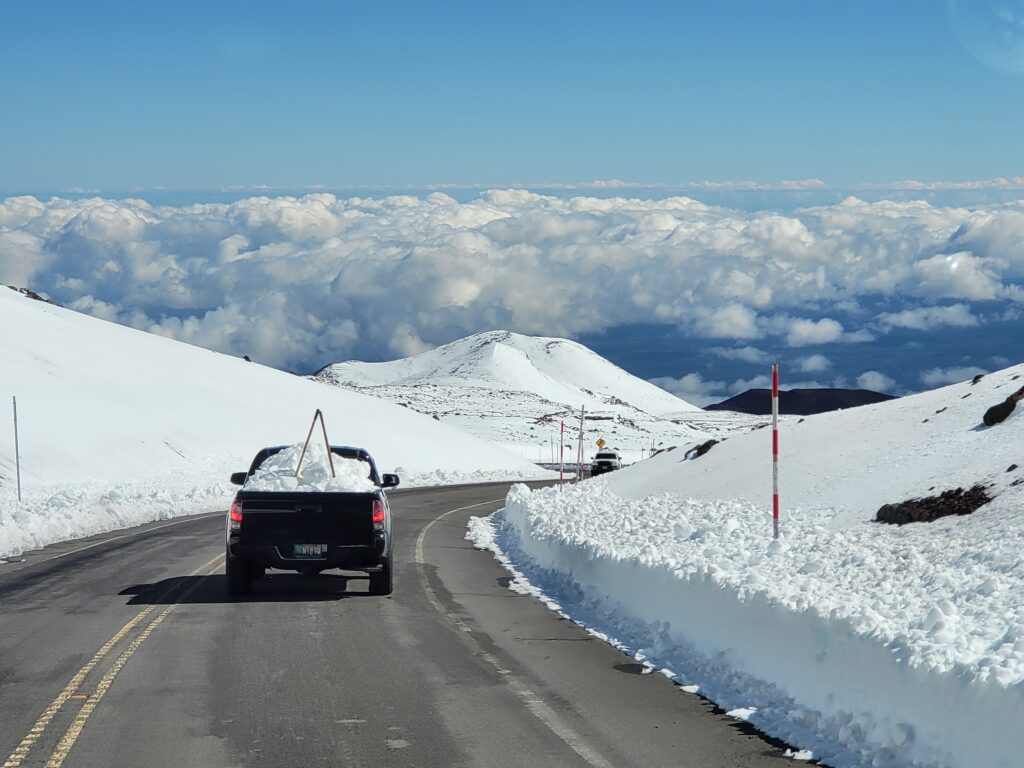
In this week’s storm, both Mauna Kea and Mauna Loa were covered in snow. While the roads at the summit are improved to normal highway standards on Mauna Kea to deal with the astronomy related traffic there, the same isn’t true for Mauna Loa. Mauna Loa, known as the world’s largest active volcano, is located across from Mauna Kea on Hawaii’s Big Island. While it’s larger in volume than Mauna Kea, it’s a tad bit shorter, standing up at 13,678 feet compared to Mauna Kea’s 13,803. Because Mauna Loa is an active volcano and Mauna Kea isn’t, there isn’t much in the way of buildings or telescopes on it. While there are science stations and the HI-SEAS Lunar / Mars simulating lab are on Mauna Loa, a single narrow road rides up the slope and it stops short of the summit. With poor access to the snow there, it doesn’t have the same draw as Mauna Kea does.
